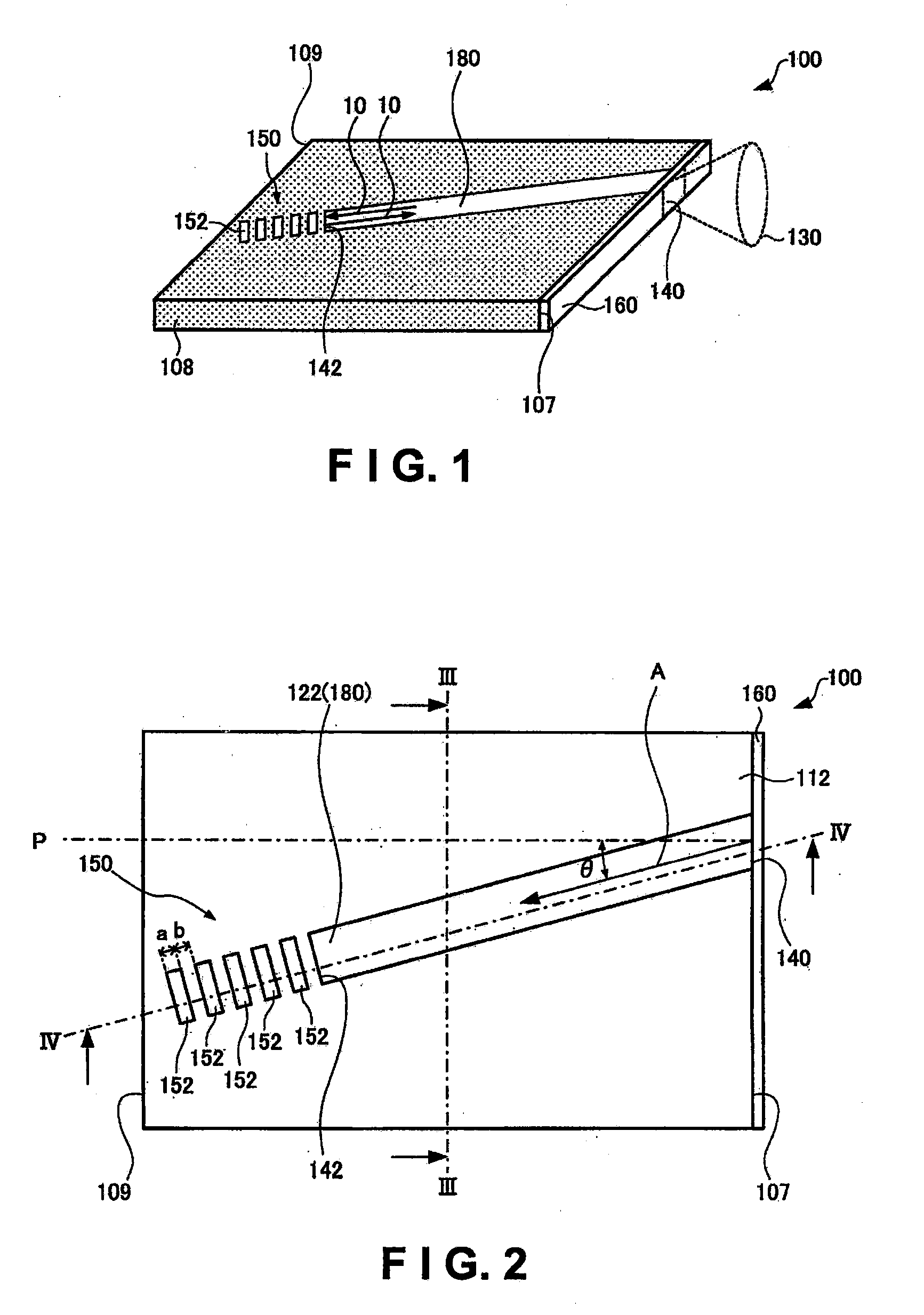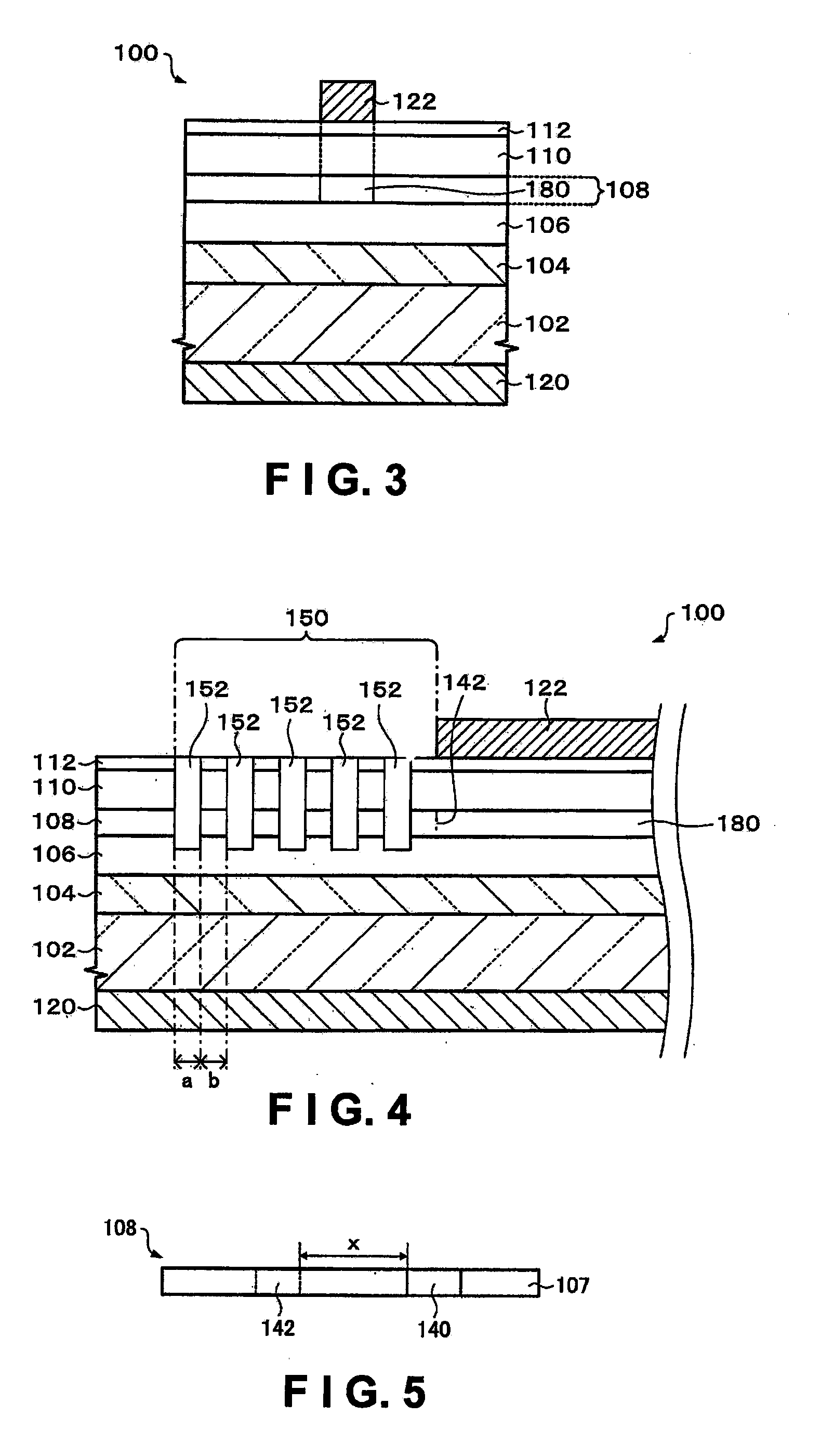Light-emitting device
a technology of light-emitting devices and components, applied in semiconductor devices, diodes, electrical apparatus, etc., can solve the problems of generating noise, unable to obtain sufficient light output from leds, and generating components of speck noise, so as to reduce speck noise, reduce noise, and increase output
- Summary
- Abstract
- Description
- Claims
- Application Information
AI Technical Summary
Benefits of technology
Problems solved by technology
Method used
Image
Examples
first embodiment
[0049]1.1. The light-emitting device 100 of the first embodiment will be described first.
[0050]FIG. 1 is a perspective view schematically showing the light-emitting device 100. FIG. 2 is a plan view schematically showing the light-emitting device 100. FIG. 3 is a cross-sectional view along the line III-III of FIG. 2. FIG. 4 is a cross-sectional view along the line IV-IV of FIG. 2. In FIG. 1, members other than the active layer 108, the reflective part 150, and the antireflective film 160 are omitted from the drawing for the sake of convenience. Described here is the case in which the light-emitting device 100 is an InGaAlP-type (red) semiconductor light-emitting device.
[0051]The light-emitting device 100 includes a first cladding layer 106, an active layer 108, a second cladding layer 110, and a reflective part 150, as shown in FIGS. 1 to 4. The light-emitting device 100 may further include, e.g., a first electrode 120, a second electrode 122, a substrate 102, a buffer layer 104, a ...
second embodiment
2. Second Embodiment
[0111]2.1. Next, the light-emitting device 700 of the second embodiment will be described next, but no limitation is imposed by the following example.
[0112]FIG. 13 is a plan view schematically showing the light-emitting device 700, and FIG. 14 is a cross-sectional view along the line XIV-XIV. In the light-emitting device 700 of the second embodiment, the same reference numerals are used for members having the same function as the constituent elements of the light-emitting device 100 of the first embodiment described above, and a detailed described thereof is omitted.
[0113]The light-emitting device 700 has a first cladding layer 106, an active layer 108, a second cladding layer 110, insulating parts 702, and a reflective part 150, as shown in FIGS. 13 and 14. The light-emitting device 700 may further include, e.g., a first electrode 120, a second electrode 122, a substrate 102, a buffer layer 104, a contact layer 112, and an antireflective film 160.
[0114]In the ex...
PUM
 Login to View More
Login to View More Abstract
Description
Claims
Application Information
 Login to View More
Login to View More - R&D
- Intellectual Property
- Life Sciences
- Materials
- Tech Scout
- Unparalleled Data Quality
- Higher Quality Content
- 60% Fewer Hallucinations
Browse by: Latest US Patents, China's latest patents, Technical Efficacy Thesaurus, Application Domain, Technology Topic, Popular Technical Reports.
© 2025 PatSnap. All rights reserved.Legal|Privacy policy|Modern Slavery Act Transparency Statement|Sitemap|About US| Contact US: help@patsnap.com



